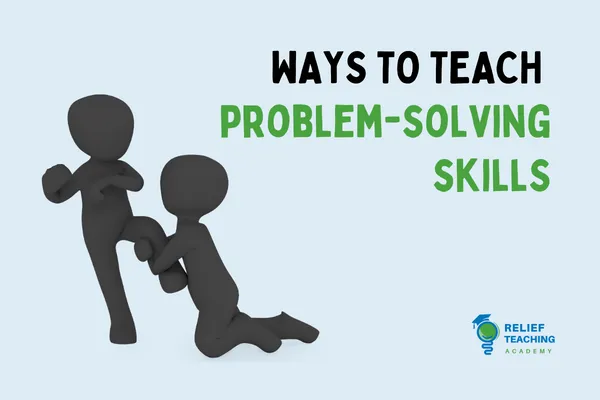Latest Academy Blogs
Select article category or search for specific article:

How to Teach Students Problem Solving Skills
How to use problems solving in your classroom to help students make better choices.
Whether a student is unable to find his math book or he's forgotten where he has put his lunch, good problem solving skills are the key to helping him manage his time at school.
Research has found that students who do not possess adequate problem-solving skills may not achieve so well at higher education. Additionally, the researchers found that teaching a student problem solving skills can even improve their attitude and mental acuity in the classroom.
You can begin teaching basic problem-solving skills during preschool and help students sharpen skills into high school and beyond.
Reasons Students Need Problem-Solving
Students face a variety of problems every day, ranging from academic difficulties to problems on the sports field. Yet, few of them have a formula for solving those problems.
Students who lack problem-solving skills may avoid taking action when faced with a problem. Rather than putting their energy into solving the problem, they may invest their time in avoiding the issue. That's why many students fall behind in school or struggle to maintain friendships.
Other students who lack problem-solving skills, jump into situations without recognizing the impact of their choices. A student may hit a another student who cuts in front of him in line because he's not sure what else to do.
Or, he may walk out of class when he's being teased because he can't think of any other ways to make it stop. Those impulsive choices may create even bigger problems in the long run
Teach Kids How to Evaluate the Problem
Students who feel overwhelmed or hopeless often won't attempt to address a problem. But, when you give them a clear formula for solving problems, they'll feel more confident in their ability to try.
Here are the steps to problem-solving:
1. Identify the problem. One of the Key Steps to Teach Problem Solving is to simply restate the problem. You can paraphrase the problem for the student. However, the student needs to skill to say the problem aloud.
Saying the problem aloud can make a big difference for students who are feeling stuck. Help students state the problem, such as,
"You don't have anyone to play with at recess?" or
"You aren't sure if you should go the the library?"
However, if students are to develop personal skills, they need to repeat the problem aloud. This will clarify the key aspects of the problem.
Notice how TV detectives keep asking witnesses to repeat what they saw. Because saying something out loud highlights key points.
Teaching students to identify key points is one of the key steps to teach problem solving.
2. Develop at least five possible solutions. Brainstorm possible ways to solve the problem. Emphasize that all solutions don't necessarily need to be good at ideas (at least not at this point). Help students develop solutions if she's struggling to come up with ideas. Even a silly answer or far-fetched idea is a possible solution. The key is to help her see that with a little creativity, she can find many different potential solutions
3. Identify the pros and cons of each solution. Help students identify potential positive and negative consequences for each potential solution identified. Writing this list down is another of the key steps to teach problem solving. Writing is slower that talking and allows for more considered approach.
4. Pick a solution. Once a student has evaluated the possible positive and negative outcomes, encourage them to pick a solution.
5. Test it out. Tell your student to try a solution and see what happens. If it doesn't work out, they can always try another solution from the list.
Practice Solving Problems
When problems arise, don’t rush to solve student's problems. Instead, help them walk through the problem-solving steps. Offer guidance when needed, but encourage them to solve problems on their own.
If students are unable to come up with a solution, step in and help them think of solutions. But don't automatically tell them what to do.
When you encounter behavioral issues, use a problem-solving approach. Sit down together and say, "You've been having difficulty working quietly in class lately. Let's problem-solve this together."
You might still need to offer a consequence for misbehavior, but make it clear that you're invested in looking for a solution so they can do better next time.
You can also use a problem-solving approach to help students become more independent. If they forgot to get all the gear from their bag to their desk, ask, "What can we do to make sure this doesn't happen again?" Let them try and develop some of their own solutions.
Students often develop creative solutions. They may say, "I'll write a note and stick it on my bag so I'll remember to get the stuff out," or "I'll pack my bag the night before and I'll put my school gear on top."
Provide plenty of praise but don't go over the top.

Subscribe to get up to date tips, strategies, resources and guidance on all things relief teaching.
Relief Teaching Academy is a service of EPC Capital Pty Ltd.
© Copyright 2023. EPC Capital Pty Ltd. All rights reserved.
Send us a message
